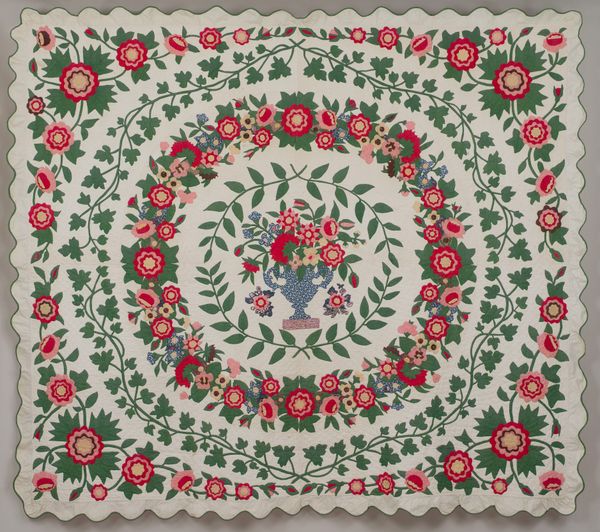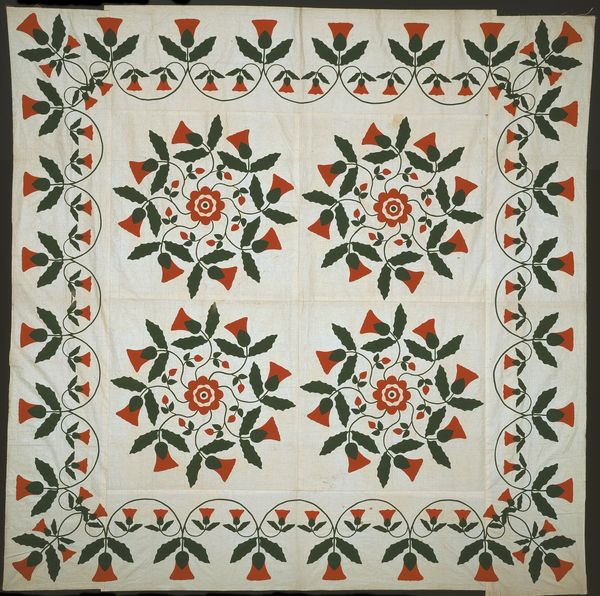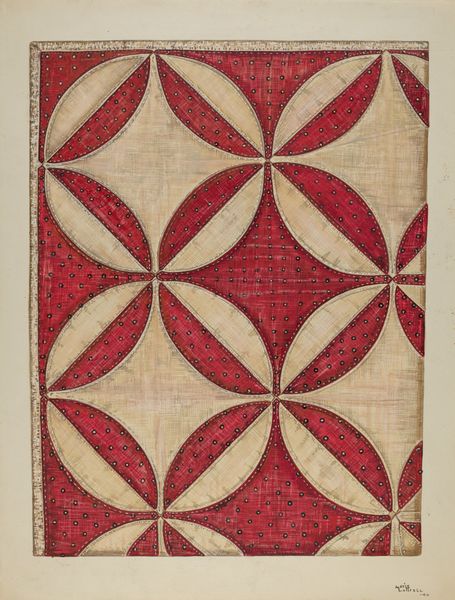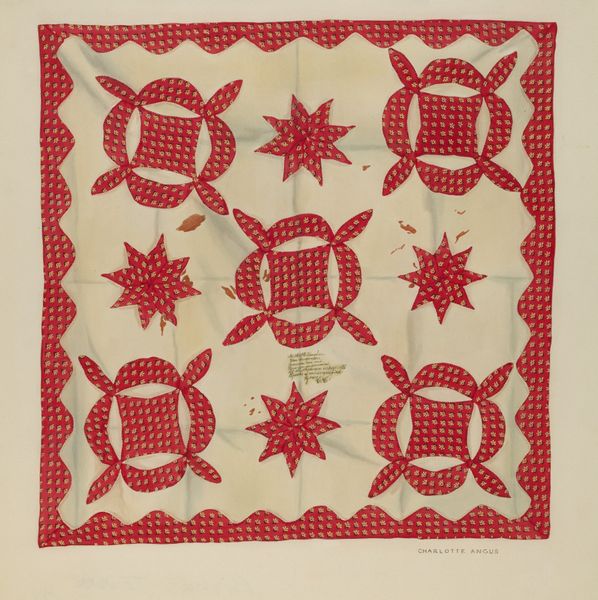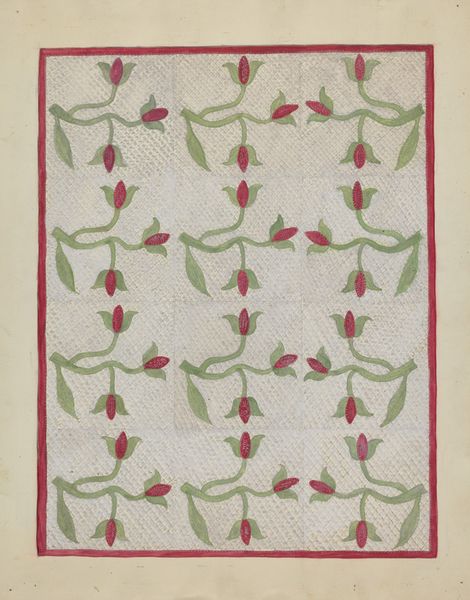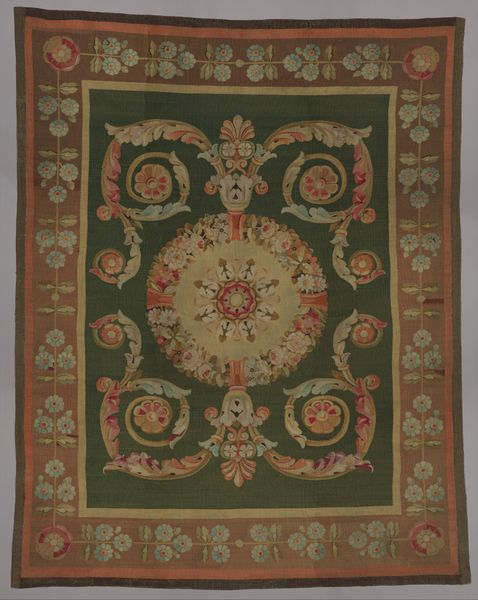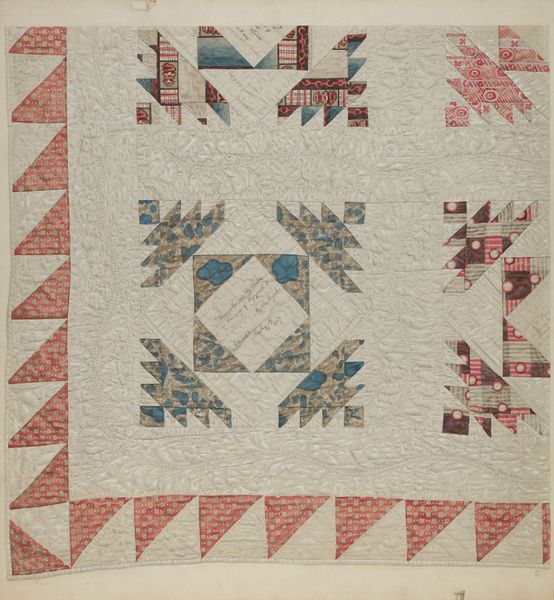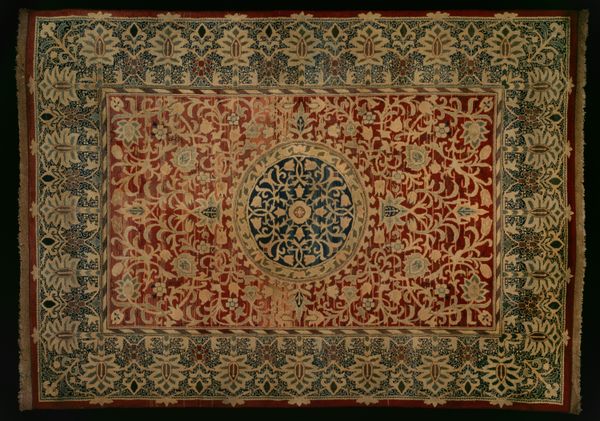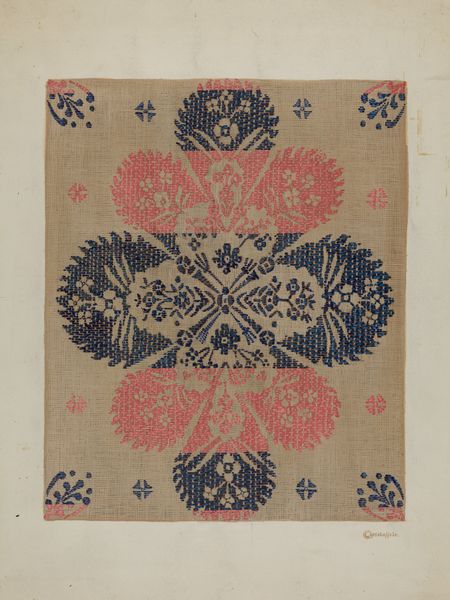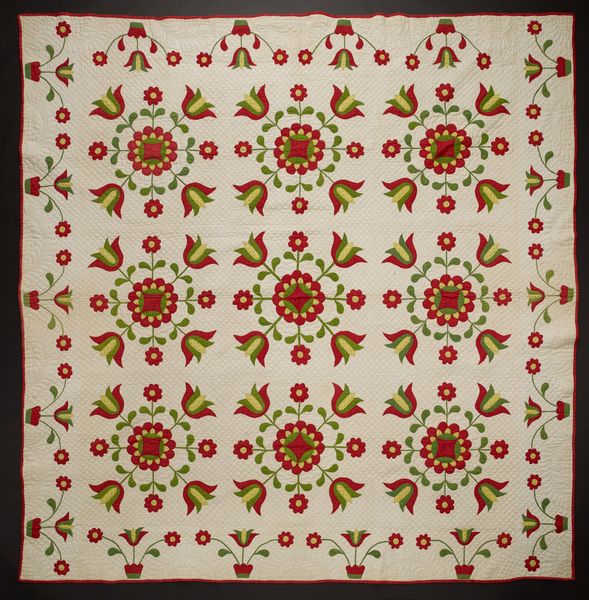
#
pattern heavy
#
natural stone pattern
#
repetitive shape and pattern
#
ethnic pattern
#
folk-art
#
organic pattern
#
geometric
#
repetition of pattern
#
vertical pattern
#
pattern repetition
#
imprinted textile
#
layered pattern
Dimensions: overall: 53.5 x 46.9 cm (21 1/16 x 18 7/16 in.) Original IAD Object: 6' x 9'
Copyright: National Gallery of Art: CC0 1.0
Editor: Here we have the "Patchwork Quilt with Eagles," crafted around 1938. The artist remains unknown, and it’s created using textile and fiber art techniques. It strikes me as a powerful combination of geometric order and whimsical folk-art charm. What story do you see woven into this piece? Curator: It's interesting that you use the word 'story', because textiles like this one *are* stories, stitched into being. Think about the role of quilting bees in communities, particularly in the American South during this period. These quilts served not just as functional objects but as powerful forms of social expression. The repetition of the eagle motif, along with geometric shapes, does convey a deliberate, potent imagery. Considering the socio-political context of 1938, how do you think the artist used this imagery? Editor: Perhaps the eagle represents a longing for freedom or resilience during a challenging time? Or maybe the geometric patterns were just aesthetic preferences. Curator: Exactly. It could be read that way. The formal qualities—the red dye and pattern against the off-white fabric—create a visual tension. Now, think about the "Pattern and Decoration" movement that celebrated the decorative arts… quilts and textile work could be more overtly appreciated as artistic endeavors. How would an exhibition change public perception of this work? Editor: I guess an exhibition would legitimize the artist's creativity, placing her in conversation with recognized artists and giving her voice the importance that it might not have had otherwise. I never thought of a quilt having a political function! Curator: It is all about considering the power dynamics and institutions that shaped this. Hopefully, it is easier now to perceive and engage with art beyond what’s conventionally understood. Editor: I'll definitely look at quilts differently from now on! I'm starting to think that the socio-cultural landscape can tell more than what a label on the wall usually tells.
Comments
No comments
Be the first to comment and join the conversation on the ultimate creative platform.
